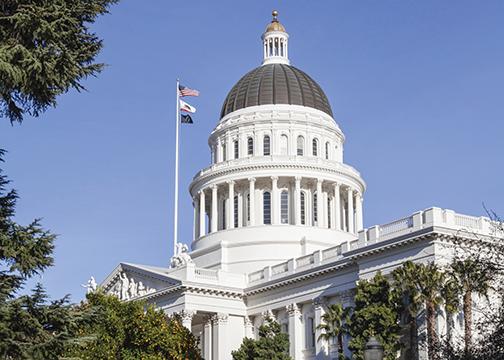
A local city ordinance that incentivizes developers to build affordable housing units may soon affect students and transit users statewide.
Assembly Bill 2345, introduced late last month by Assemblymember Lorena Gonzalez-Fletcher (D, San Diego), would increase “density bonus” incentives for developers that set aside a percentage of their housing units for very-low and low-income residents.
The bill also provides incentives to such developments within a half-mile radius of transit stations, such as a reduction in required parking spaces that often increase costs for developers.
The bill is inspired by a 2016 affordable housing ordinance unanimously approved by the San Diego City Council that provided similar incentives for developments within the city limits.
Under AB 2345, projects that set aside up to 15% of their units as affordable have access to additional incentives that include allowing developers to construct more units on a parcel of land than local zoning laws would otherwise permit.
California has failed to provide adequate #AffordableHousing. Our #HousingForAll plan will take the lessons we learned in San Diego, statewide:
#AB2345 will incentivize growth
#AB2344 will prevent segregation in mixed-income developments
MORE: https://t.co/t8MaMRzmy8 pic.twitter.com/qCYDBkzzW6
— Lorena Gonzalez (@LorenaAD80) February 26, 2020
Students are specifically mentioned in Gonzalez-Fletcher’s bill.
Developers who build student housing also have access to incentives should they provide 20% of units for low-income students, as defined by students who are eligible for financial aid, such as through Cal Grant A or Cal Grant B.
The bill stipulates that developers must provide priority for lower-income students currently facing homelessness.
The Cal State Student Association, responsible for student advocacy for undergraduate and graduates at the CSU’s 23 campuses, lists “access to housing, food, and wellness resources that promote overall student health and safety” as its utmost priority.
“CSU students face many challenges outside of their academic courses, including food and housing insecurity, a lack of access to mental health resources, and physical dangers within the surrounding areas,” according to the CSSA’s 2020 policy agenda. “While the effects of these issues are widely felt, the burdens are inequitably carried by underrepresented minority (URM) students and those from low-income backgrounds.”
San Diego State plans to construct 4,600 units as part of its Mission Valley campus expansion that will also see the construction of a 35,000-seat multi-use stadium, recreation spaces, retail and university buildings.
Of these units, the university has pledged 10%, or 460 units, to be designated as affordable.
Proponents of density bonus legislation say the 2016 city ordinance that inspired the bill has thus far been successful.
Circulate San Diego, a nonprofit planning and land-use advocacy organization, led the coalition that lobbied the San Diego City Council to adopt the density bonus ordinance in 2016.
According to a report authored by Circulate a year after the ordinance was adopted, the program has produced a 900% increase per month for projects applying to use the program.
Circulate and another organization, Up for Growth, have co-sponsored AB 2345.
The bill, which also provides incentives for developments near transit stations, could also affect the College Area given the neighborhood’s proximity to the SDSU Transit Center and other stops along the MTS Trolley’s Green Line.
Sustainability junior McKenna Avery said the bill could be successful in reducing air pollution locally should developers take advantage of incentives for building near transit stations. She also said the university’s proximity to a major transit center helps students make sustainable decisions.
“One of the reasons SDSU transit is successful is because it is located so centrally among multiple different student apartments and residential halls,” Avery said. “Urban sprawl has contrasted with green growth because as we build housing farther and farther from the city centers, more people are driving from farther distances — most likely to the jobs all located in the same place.”
Avery also said increasing the frequency of and access to transit options would make life without a car more accessible and convenient for students and residents alike.
“Overall, I think every initiative is getting us closer to engaging in conversations about solutions,” she said.
But others aren’t as sold on the statewide process.
College Democrats of SDSU Vice President Armando Sepulveda said the state needs to rethink how developers construct new housing.
He also voiced concerns over Gonzalez-Fletcher’s track record on student issues, specifically in reference to Assembly Bill 532, legislation introduced last year that intended to make faculty and staff parking prices more equitable in comparison to student permit prices.
Sepulveda said Gonzalez-Fletcher was responsible for the bill dying in committee.
“Making housing and reevaluating our housing to be more dense is critical to a sustainable California, whether we are talking financially or environmentally,” Sepulveda said. “I think (AB 2345) is a good start, but her track record on student issues leads me to be wary of any initiative she puts forth.”
Gonzalez-Fletcher also introduced another bill as part of her “Housing for All” initiative, Assembly Bill 2344, which would ban developers from constructing “poor doors,” or a separate entrance for building residents of low-income status.
That bill would also ensure all tenants regardless of income level would have the same access to common areas and housing complex amenities.






